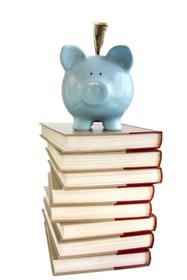Top Rankings
Pittsburg Independent School District ranks among the top 20% of public school district in Texas for:
Category
Attribute
Math Proficiency
Highest math proficiency (Top 20%)
Science Proficiency
Highest science proficiency (Top 20%)
Diversity
Most diverse schools (Top 1%)
For the 2025-26 school year, there are 3 public elementary schools serving 1,270 students in Pittsburg Independent School District. This district's average elementary testing ranking is 8/10, which is in the top 30% of public elementary schools in Texas.
Public Elementary Schools in Pittsburg Independent School District have an average math proficiency score of 51% (versus the Texas public elementary school average of 45%), and reading proficiency score of 58% (versus the 52% statewide average).
Minority enrollment is 68% of the student body (majority Hispanic), which is less than the Texas public elementary school average of 75% (majority Hispanic).
Overview
This School District
This State (TX)
# Schools
5 Schools
6,900 Schools
# Students
2,285 Students
3,737,053 Students
# Teachers
206 Teachers
255,471 Teachers
Student-Teacher Ratio
11:1
11:1
Student By Grade
District Rank
Pittsburg Independent School District, which is ranked #298 of all 1,196 school districts in Texas (based off of combined math and reading proficiency testing data) for the 2022-2023 school year.
The school district's graduation rate of 95% has stayed relatively flat over five school years.
Overall District Rank
#301 out of 1202 school districts
(Top 30%)
(Top 30%)
Math Test Scores (% Proficient)
54%
44%
Reading/Language Arts Test Scores (% Proficient)
55%
51%
Science Test Scores (% Proficient)
58%
46%
Graduation Rate
(21-22)≥95%
90%
Students by Ethnicity:
Diversity Score
0.65
0.64
% American Indian
n/a
n/a
% Asian
1%
6%
% Hispanic
46%
53%
% Black
14%
13%
% White
34%
25%
% Hawaiian
n/a
n/a
% Two or more races
5%
3%
All Ethnic Groups
District Revenue and Spending
The revenue/student of $12,772 in this school district is less than the state median of $13,387. The school district revenue/student has stayed relatively flat over four school years.
The school district's spending/student of $11,788 is less than the state median of $14,117. The school district spending/student has stayed relatively flat over four school years.
Total Revenue
$29 MM
$74,029 MM
Spending
$27 MM
$78,063 MM
Revenue / Student
$12,772
$13,387
Spending / Student
$11,788
$14,117
Best Pittsburg Independent School District Public Elementary Schools (2025-26)
School
(Math and Reading Proficiency)
(Math and Reading Proficiency)
Location
Quick Facts
Rank: #11.
Pittsburg Intermediate School
(Math: 79% | Reading: 67%)
Rank:
Rank:
10/
Top 10%10
209 Lafeyette
Pittsburg, TX 75686
(903) 855-3395
Pittsburg, TX 75686
(903) 855-3395
Gr: 5-6 | 318 students Student-teacher ratio: 11:1 Minority enrollment: 69%
Rank: #22.
Pittsburg Elementary School
(Math: 28% | Reading: 48%)
Rank:
Rank:
4/
Bottom 50%10
110 Fulton St
Pittsburg, TX 75686
(903) 856-6472
Pittsburg, TX 75686
(903) 856-6472
Gr: 2-4 | 503 students Student-teacher ratio: 14:1 Minority enrollment: 68%
Rank: n/an/a
405 Broach St
Pittsburg, TX 75686
(903) 856-6482
Pittsburg, TX 75686
(903) 856-6482
Gr: PK-1 | 449 students Student-teacher ratio: 11:1 Minority enrollment: 67%
Recent Articles

How Public Schools Support Students on Free / Reduced-Lunch Programs
Explore how U.S. public schools support students eligible for free or reduced-price lunch through nutrition, academic, and wraparound services in 2025.

Hidden Costs of Public Schools: Fees, Supplies & Extras
Explore the hidden costs in public schools鈥攆ees, supplies, extracurriculars鈥攁nd how parents can plan for them in 2025.

Public School Funding 2025: What Families Should Know
Essential insights on public school funding in 2025鈥攈ow it works, what鈥檚 changing, and what families should know to stay ahead.





